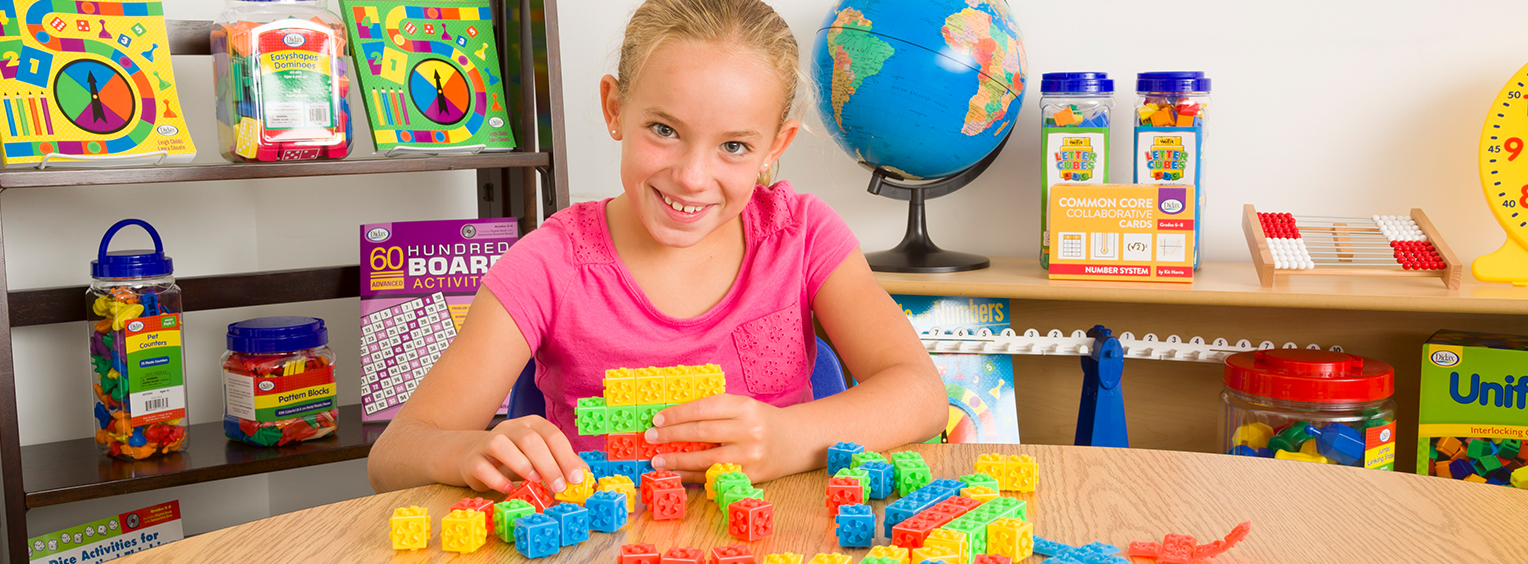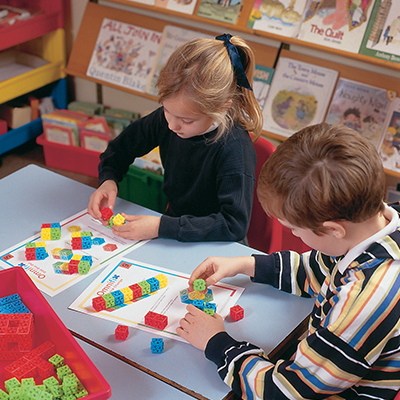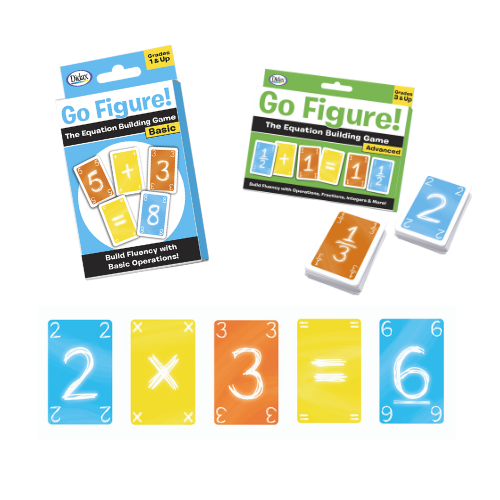Improve Critical Thinking with Omnifix Cubes
- By Matt Christiansen
- Mar 22, 2017

As an undergraduate education student, I was challenged to write my personal mission statement that would help me define myself as a teacher. I don't recall the entire statement, but I know that it included something along the lines of "helping students think critically about mathematics." Looking at this from an experienced perspective, I'm not convinced that I knew what critical thinking was, let alone how to help my students become critical thinkers. With time, I've come to understand that there is no one way to accomplish this task, but there are strategies we can implement that will help students develop these skills.
 One tool that we know helps students build their critical thinking skills is classroom discussion. I've used a variety of strategies to encourage dialogue and discussion in the classroom, and one of the most effective methods involve the use of manipulatives. One of my new favorite tools are Omnifix cubes, which allow students to construct a variety of regular and irregular solid shapes. With a connector on all six faces, Omnifix Cubes can be joined in any direction to create rods and blocks or other geometric and abstract forms.
One tool that we know helps students build their critical thinking skills is classroom discussion. I've used a variety of strategies to encourage dialogue and discussion in the classroom, and one of the most effective methods involve the use of manipulatives. One of my new favorite tools are Omnifix cubes, which allow students to construct a variety of regular and irregular solid shapes. With a connector on all six faces, Omnifix Cubes can be joined in any direction to create rods and blocks or other geometric and abstract forms.
Structured activities with the cubes help students develop critical thinking in three important areas: patterns and arrangements; symmetry, reflections, and rotations; and perimeter, area, and volume.
Thinking About Patterns and Arrangements
With as few as three or four cubes, students can create a variety of patterns. With students in groups, give each student four cubes-each a different color-and ask them to build a square. Have them compare their squares, looking for those that are the same and those that are different. Encourage students to think about the patterns with questions like, "Which one is different? How do you know?" Now have students find all the different ways to arrange their four cubes into a square. Ask, "Can you find all the combinations? Find a way to record them." Students begin to think critically about the problems as they use higher-order thinking skills and move beyond simple application.
Thinking About Symmetry, Reflections, and Rotations
Students begin to recognize ideas of symmetry, reflection, and rotation as they build and compare shapes. Students will see that sometimes they have to rotate a shape before they can see that it is the same as another. With students in groups, give each student four cubes, all the same color. Challenge students to make as many different shapes as possible with the four cubes. Then have students compare two of the shapes. Ask, "These shapes look different, but are they? How do you know?" Encourage students to rotate the shapes and look at them from different directions as they answer the question. Ask students to explain their process.
Students can also explore concepts of reflection and symmetry. With students in pairs, give each student six cubes. Have one student build an irregular shape, and then the other student creates the reflection or mirror image of the shape. The first student then moves one cube, asking, "What if this cube moved?" and the second student revises their reflected shape to match the new shape. The students change roles and repeat the activity.
Asking "What if...?" questions encourages critical thinking and helps students think deeply about the activity.
Thinking About Perimeter, Area, and Volume
Because of their shape, Omnifix cubes allow students to explore concepts of perimeter, area, and volume in both regular and irregular shapes and solids. When solving perimeter problems, be sure that students understand that they are counting along the outside faces of the cubes and not the cubes themselves.
With students working individually or in groups, give each student an even number of cubes; twelve might be a good starting point for this activity. Ask students to build as many different "frames" as they can using all the cubes and record their results. Ask, "What is the same about each of the frames? What is different?" Students will begin to see that all the frames have the same perimeter.
Extend this activity by asking students to build as many rectangles (figures with no open space in the middle) as they can using all the cubes. Again, have them record the results and ask, "What is the same about each rectangle? What is different?" Students should see that the area stays the same, although the perimeter changes. Challenge students to find a figure where the area and perimeter have the same value. In later years, students can explore a similar relationship between volume and surface area of solids using the cubes.
Critical thinking is developed over time and with great care. Using effective questioning and meaningful activities, teachers can help students develop critical thinking skills and enrich their understanding of mathematics. I still believe that students can learn to "think critically about mathematics," and we all have the tools necessary to help them.
Downloadable Activities for Omnifix Cubes
Here are some great activities to get you started with Omnifix:







 © 2023 Didax, Inc. All Rights Reserved.
© 2023 Didax, Inc. All Rights Reserved.